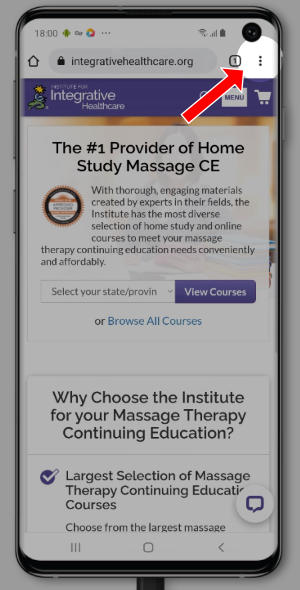 Want to earn continuing education credit for this article? Learn more.
Want to earn continuing education credit for this article? Learn more.
As one of the first kinds of healthcare professionals sought for help with musculoskeletal pain, it is no surprise that massage therapists are the preferred choice for helping to relieve neck pain. A skilled massage therapist can offer great relief to those with this prevalent problem; however, the relief may be temporary or can recur. Thus, the suggestions given below are intended to give clients self-reliance tools to prevent the reoccurrence of neck pain – or at least to assist in their pain management efforts at home.
Fortunately, most cases of neck pain are not serious. Ruling out a traumatic incident, a tumor, fracture, pressure on the spinal cord, an infection and a cardiovascular blockage, the most likely culprits of neck pain are strained muscles and osteoarthritis.
Neck muscle strain can be a result of repeated movements or maintaining sustained positions. Some examples include:
- Poor sitting alignment while at a desk or computer.
- Working with the shoulders forward which causes the head to tilt back.
- Sleeping in an awkward position.
- Sitting in a car longer than usual.
- Looking up repeatedly – for example: painting a ceiling or star gazing.
Arthritis or age-related changes can result in bony spurs and narrowed disc space in the cervical vertebrae. Joints with arthritis are more prone to inflammation from repeated movements or sustained positions than healthy joints.
Another etiology of cervical pain is emotional stress. Stress is known to precede apical breathing patterns. Together, stress and shallow, apical breathing cause neck muscles to tense. If this tension is sustained, a compressive force is exerted on the cervical vertebrae.
Waking with a stiff neck or having intensifying neck discomfort can be very painful. Thankfully, a long list of massage therapy techniques can help release hypertonic neck muscles, activate blood circulation and increase range of motion. However, a healer’s intentions go far beyond providing immediate pain relief. Sending clients with neck pain home with a flyer full of suggestions – or at least a verbal recitation of them – can go a long way in helping them deal with this nuisance or even prevent it from happening again.
Seven self-care strategies to empower clients with neck pain are:
- Stress Relief – While stress will aggravate neck pain, relaxation can ease it. Suggestions for accomplishing this feat include deep abdominal breathing, meditation, visualization and other relaxation techniques.
- Frequent Breaks – Even though sustained positions foster muscle tightness, this practice is deeply ingrained in our culture. If driving long distances or working long hours in one position, make sure to take frequent breaks. Breaks are best used to stretch, breathe deeply, take a sip of water and return to proper posture.
- Exercises and Stretches – While some must be prescribed by a physical therapist, a massage therapist can suggest exercises and stretches for the neck as long as they don’t cause pain. Exercises and stretches help reduce pain by restoring muscle function, optimizing posture to prevent overload of muscle and increasing the strength and endurance of the neck muscles. These can include shoulder blade rolls/squeezes/shrugs, cervical extension/flexion, rotation, stretching the front wall chest muscles, strengthening the shoulder muscles and isometric exercises.
- Hot and Cold Therapy – Most practitioners suggest alternating heat and cold to help a stiff, painful neck. Reduce inflammation by applying a cold pack for up to 20 minutes several times a day. Alternate this approach with heat, either a warm shower or a hot pack, for up to 20 minutes. Heat can help relax sore muscles, but it can aggravate inflammation if the area is red, warm and swollen.
- Evaluate Ergonomics – Adjusting home or workplace conditions to relieve unnecessary neck stress can go a long way in preventing cervical discomfort. This includes proper positioning of a desk, chair, computer and phone so the screen is at eye level, knees are slightly lower than hips, arms rest comfortably on armrests and the neck is in a relaxed neutral position while on the phone.
- Sleep Deliberately – Since a lot of neck pain can arise from poor positioning during sleep, deliberately planning a sleep position can prevent a painful neck. Avoid sleeping on the stomach and use a pillow that supports the natural curve of the neck. Back sleepers are advised to use a rounded pillow (neck roll) under the curve of the neck, with a flatter pillow cushioning the head. Side sleepers should keep their spine straight by using a pillow that is higher under the neck than the head. The goal is to prevent overnight neck flexion.
- Sock and Tennis Balls – A simple homemade device can be used for self-administered cervical acupressure. Put two tennis balls in a sock and tie off the sock so the balls are stationary. Place the tennis balls under the occiput so they are pressing on the hollows under the skull on either side of the spine (Gallbladder 20) for about 10 minutes. Lying on this device can help relax taut, posterior neck muscles.
With today’s fast-paced society, stress and muscle tension are significant sources of neck pain. In fact, a person who has suffered from neck pain in the past is four times more likely to end up with a recurrence of this problem. Although, if armed with these seven strategies, massage therapists can empower their clients to overcome neck pain – and prevent its return.
Earn continuing education credit for this article contained in our Health Maintenance – Mind & Body series. Click here to enroll.
More Information:
Neck Pain: Massage Benefits and Precautions
References:
http://physicaltherapy-backpain.com/neck/neck-pain-and-depression.php, Neck Pain Relief Using Natural Remedies, Retrieved January 1, 2012, Neck Pain Guide, 2012.
http://view.mail.health.harvard.edu/?j=fe531678746c0c7f7c12&m=febb15747d630d7a&ls=fe051c747766077d75147775&l=fe57157677630c7b7217&s=fe591c797661017a7414&jb=ffcf14&ju=fe221772716d0d75701071&r=0, Say “Good Night” to Neck Pain, Retrieved January 1, 2012, Harvard University, 2012.
http://www.mayoclinic.com/health/neck-pain/DS00542, Neck Pain, Retrieved January 1, 2012, Mayo Foundation for Medical Education and Research, 2012.
http://www.permanente.net/homepage/kaiser/pdf/16213.pdf, Acute Neck Pain, Retrieved January 1, 2012, Kaiser Permanente, 2012.











